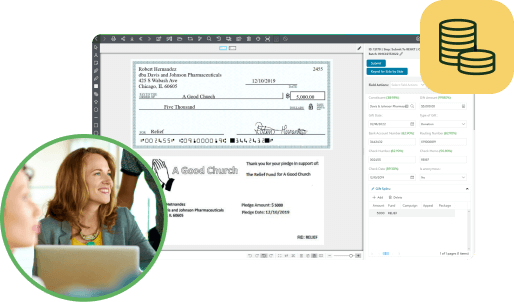Your Blackbaud CRM allows you to manage your data, launch campaigns, and organize day-to-day tasks. As your nonprofit expands, you may find yourself growing out of Blackbaud’s basic tools and requiring features it does not come with. Nonprofits experiencing these issues should consider investing in new integrations they can customize to fit their unique needs.
Customizing Blackbaud can be a time- and resource-intensive process, but once accomplished, your nonprofit will be armed with the exact tools you need to operate efficiently and fulfill your mission.
Your nonprofit should understand what you need for your customization before you start this endeavor and plan accordingly to make the best use of your limited resources. To help, here are three considerations to take into account when planning to customize your CRM.
1. Features and Workflow Needs
Your nonprofit is customizing Blackbaud to meet its exact needs, so ensure you have an outline of what those needs are and how the optimization will meet them. A guide to nonprofit digital strategy emphasizes that the first step to any major digital upgrade or campaign is the identification stage.
During the identification stage, assess your current software and needs by answering the following questions:
- What are your nonprofit staff’s current everyday tasks? Do they rely on Blackbaud or a separate solution to complete these tasks?
- What constraints are currently limiting your staff? Are these constraints related to your Blackbaud setup?
- Has your CRM adapted to your nonprofit’s growth? What do you envision your Blackbaud setup will need to do to keep up with your growth (for example, will it contain more records, facilitate increased email output, or process a larger number of annual donations)?
- How will changes to your CRM impact front-end donors? How will you continue to facilitate a positive donor experience during the customization process?
In addition to these core questions, remember that a customization is an opportunity to design your CRM to align with the exact practices you would like to see your staff adopt. In addition to basic functionalities, a Blackbaud customization is also an opportunity to make small but valuable quality-of-life improvements, such as adding your nonprofit’s logo to internal forms or reworking your internal time tracking procedures.
While you may want to move forward with making improvements quickly, take time in the identification stage to thoroughly work out what you want your customization to look like. After your customization, you can hire a new developer to continue work on your CRM if your initial approach ends up falling short. However, going in with a complete plan will save you time and resources and set your nonprofit up with a long-term fundraising solution.
2. Integrations
Your CRM is the centerpiece of your customization, but you’ll also want to take into account any integrations you plan to incorporate. To help organize your integrations and add-ons, consider both current and potential platforms using these three categories:
- Third-party add-ons. Assess your technical stack for any third-party tools you currently use and would like to continue using even after your optimization. For example, you may have a secure payment automation system that you highly trust and value. There may be third-party tools that integrate with your new Blackbaud system that you haven’t previously considered but would like to explore.
- Native applications. Popular CRMs with large developer communities will likely have a variety of native applications to consider. These are add-ons designed specifically for that CRM.
For example, nonprofits interested in Blackbaud Raiser’s Edge NXT should research what integrations they want to implement before partnering with a developer. Then, they can work with their consultant to outline the implementation process and receive technical insight into how their system will function. In some cases, nonprofits interested in many integrations may even need a specific add-on just to keep all integrations organized.
3. Budget
Investing in a new CRM and customizing it can quickly accumulate costs, and your nonprofit should outline your expected timeline and budget in advance. Before drafting your budget, assess your current software and practices to ensure you know what you need from your customization to manage your spending and avoid allocating funding toward features you may not need.
When planning your budget, take the following expenses into account:
- Software. CRMs that have customization options will likely either have a monthly or annual fee structure. To start creating your customization budget, factor in the costs of your base software as well as recurring fees for any integrations you plan to integrate with your CRM.
- Development. Work with your developer to determine what your customization will do and look like for users. The development schedule will include time for programming the customizations, as well as meeting with your team to ensure they align with your vision. Consider if your developer will also assist with your data management and migration or if you will hire a separate consultant to handle the implementation process.
- Training. Your staff will need time to get used to a new CRM. You can speed up the learning process and ensure they understand new features fully by hosting training sessions. These sessions should be led by someone familiar with your new software and customizations, such as a developer or consultant. Select which team members will attend these sessions and how you will document them to train the rest of your staff.
- Service plans. In addition to the CRM itself, it may be worthwhile to invest in a CRM with a service plan. Some CRM providers will factor ongoing service into the subscription cost, whereas others might have add-on packages with differing levels of support.
Be aware that the implementation and customization process may impact other parts of your nonprofit’s operations, which may affect your organization’s ability to fundraise in the short term. For instance, consider how your staff will get in touch with donors while you are in between CRMs or if you need to plan an upcoming campaign before your staff finish their training.
Once fully customized, your CRM will enable your team to run campaigns, reach out to supporters, and manage day-to-day tasks to your exact preferences. In preparation for your customization, assess your current technology, research developers, and plan a budget with funds allotted for the services you need to get the most out of your new CRM.
Why PairSoft?
PairSoft’s natively integrated Blackbaud fundraising solutions help you get the most out of your investment in the Blackbaud CRM. If your organization is looking to strengthen its donation strategies and get back to focusing on fundraising, get a demo today.







